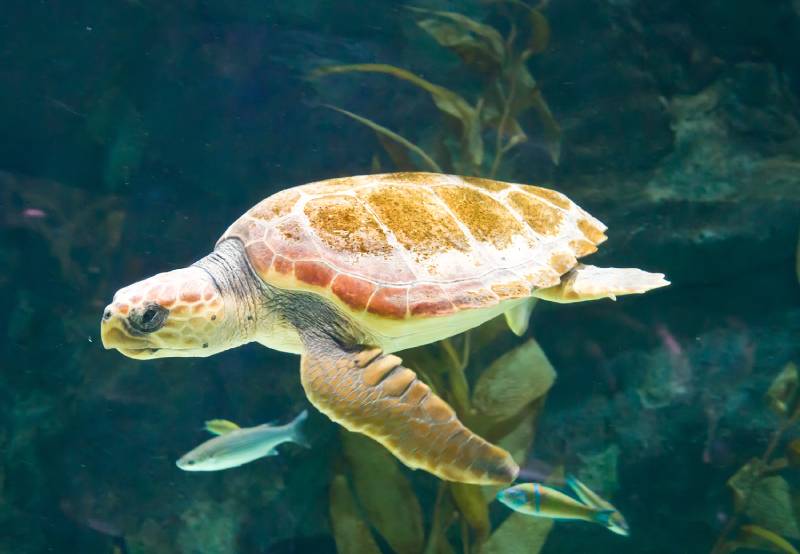Can Turtles Eat Grapes? Our Vet Answers
Updated on
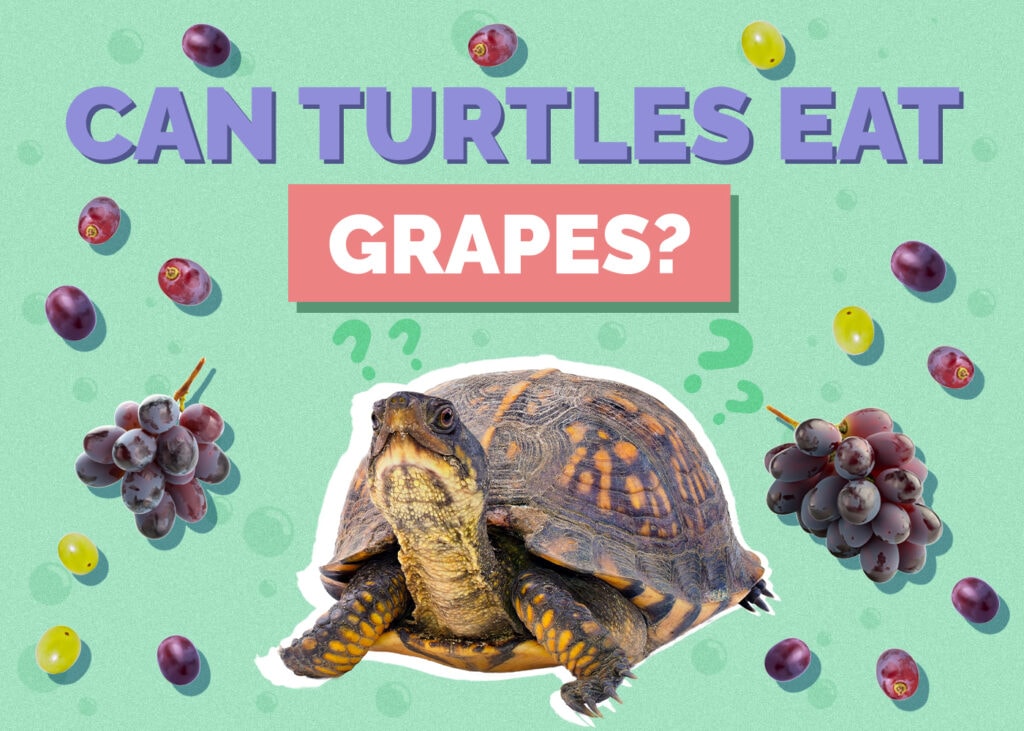
Click to Skip Ahead
As turtle owners seek to diversify their shelled companions’ meals, one question arises: Can turtles eat grapes? Grapes are safe for turtles but do not offer them much in terms of nutritional benefits.
We look at the nutritional characteristics of grapes and the benefits and risks of feeding them to turtles. Let’s dive in!
Turtles & Grapes
This article assumes that your turtle is an omnivore and can safely consume grapes. Please note that not all turtles are omnivores or herbivores, and many species of turtles have a dietary bias depending on their age. They are often more carnivorous when young.
It is very important to always consult your veterinarian before incorporating any food into your turtle’s diet, as there are many factors that play an important role in your turtle’s nutritional welfare.
Inherently, grapes aren’t toxic for most turtles. In nature, turtles and tortoises play a pivotal role in the ecosystem by eating fruits, and doing so allows them to act as seed dispersers. Turtles have been documented eating over 580 plant species1.
Most turtles are opportunistic feeders and their diet varies considerably depending on the season and availability of food. Their fruit intake typically increases in the summer months, likely in conjunction with the natural fruit plant reproduction cycles.
It is, however, worth noting that grapes we grow for human consumption aren’t a good approximation of their wild counterparts. Grapes were originally cultivated in the Middle East some 8,000 years ago and, therefore, it isn’t correct to assume that just because wild turtles eat fruits that fruits grown for human consumption are good for them.
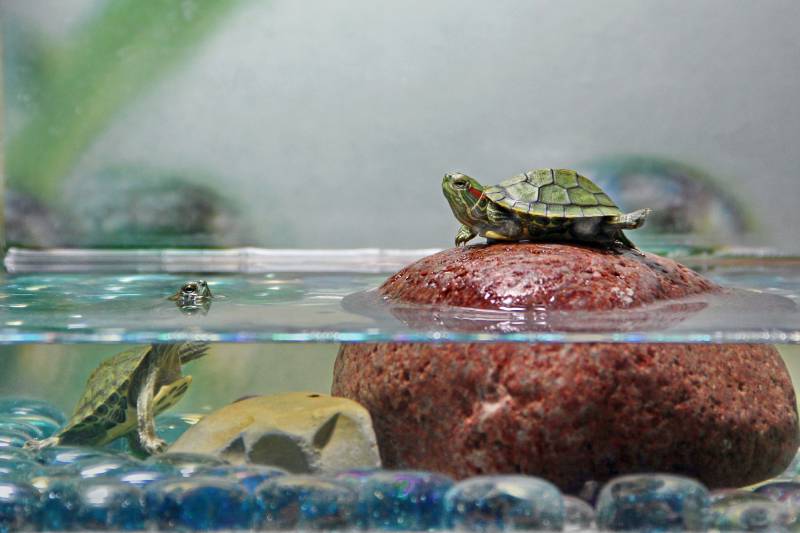
Grape Nutritional Information
Like most fruits, grapes are primarily composed of water, and much of their caloric content is in the form of naturally occurring sugars (this constitutes the carbohydrate content of the fruit).
- Water:54 grams (g)
- Carbohydrates: 18.1 g
- Fat: 0.16 g
- Protein: 0.72 g
- Fiber: 0.9 g
- Calcium: 10 milligrams (mg)
- Phosphorus: 20 mg
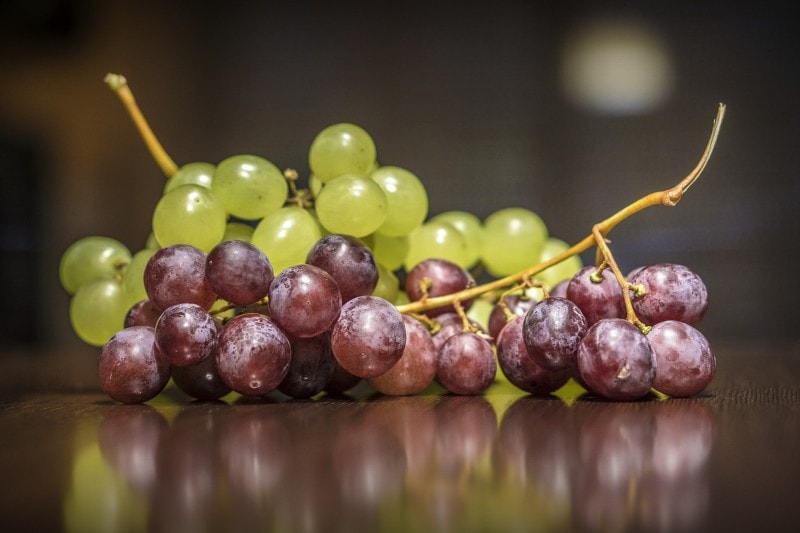
Potential Health Benefits of Feeding Grapes to Turtles
There isn’t much going for grapes in terms of their health benefits for turtles. Though it is worth noting that grapes do contain several vitamins and minerals, they’re either too small of an amount to make a meaningful impact on your pet’s well-being or the nutritional downsides of grapes don’t outweigh the benefits.
All in all, grapes can be summarized as a treat that can provide some additional hydration to turtles and a safe treat on occasion for turtles that enjoy it. Your pet wouldn’t miss out from a nutritional standpoint if you didn’t offer them grapes.
Among all turtles, terrestrial turtles (such as the ornate box turtle) have the widest possible dietary freedom and seem to readily consume a wide range of foods. Incorporating fruits into their diet in an amount not exceeding 15% of their total dietary intake is considered acceptable. Grapes would offer these turtles some benefits; however, it is important to feed them a highly varied diet, so they shouldn’t be offered just grapes for their fruit intake.
Potential Risks of Feeding Grapes to Turtles
The risks of grapes unfortunately outweigh the benefits they offer. For young turtles, the correct ratio of protein and fat is crucial to ensure that they grow properly. Unfortunately, most fruits don’t offer enough of either of these nutrients, and a young turtle fed too many fruits will likely end up obese.
Furthermore, the low calcium (when compared to phosphorus) in grapes will predispose a pet turtle to conditions like metabolic bone disease, which leads to a compromised shell. This is made worse by the fact that grapes are naturally very high in oxalates, which are compounds which further limit the absorption of calcium within the body. These downsides render grapes as an occasional treat at best, and a health risk if fed too frequently or in excess.
Finally, even if fruits are safe for a turtle to consume (depending on their species), they should always be fed sparingly, as overconsumption of fruits can lead to diarrhea and other digestive issues for pet turtles.
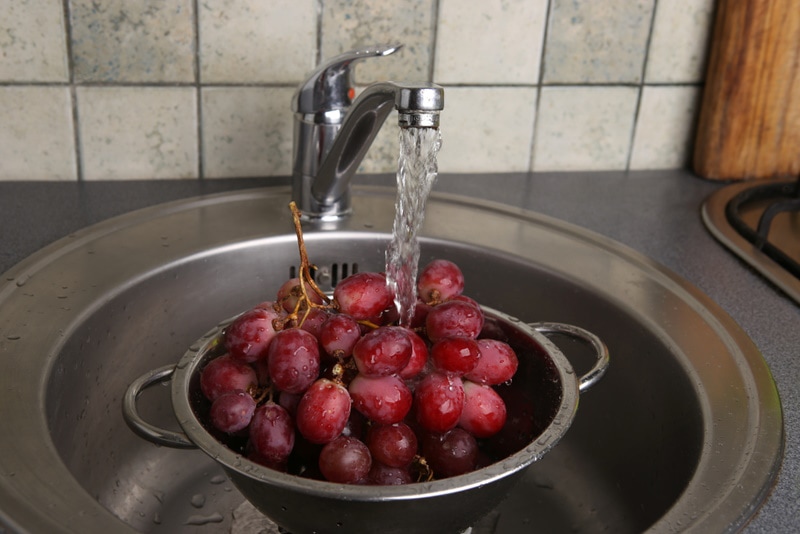
What’s the Best Way to Introduce Grapes Into Your Turtle’s Diet?
If you do wish to incorporate grapes into your pet’s diet, here’s the best way to go about doing so. As a rule of thumb, fruit for pet turtles should be prepared much in the same way it’s prepared for human consumption.
- Only feed your turtle fresh, raw grapes. Do not offer them grapes in the form of candy or any processed foods that contain grapes (such as grape flavored jam).
- Wash the grapes thoroughly.
- Chop them into small pieces, depending on the size of your turtle’s mouth.
- Serve!
- Ensure you remove any uneaten fruit after a period of no more than 4 hours. Fruit tends to spoil much faster than vegetables do.
Though turtles can safely consume the seed of most fruit, it is best to not offer this to your pet. The skin of grapes is safe for turtles to consume, though.
For determining frequency of feeding, it is best to consult your veterinarian, as many factors, such as your turtle’s age, species, health status, weight, metabolic status, reproductive status, and any underlying health issues (to name a few), will play a factor in determining how many grapes are safe for them. As a rule of thumb, if you’re not sure about your turtle’s nutritional requirements, it’s not appropriate to add new items (particularly fruit) into their diet.
Final Thoughts
Like many fruits, grapes are safe for omnivorous and herbivorous turtles. However, their nutritional benefits are largely overshadowed by their nutritional downsides. Therefore, grapes and other fruits should only be fed to your turtle in moderation after discussing their incorporation into your pet’s diet with your veterinarian.
See Also:
Featured Image Credit: Pexels, Pixabay





